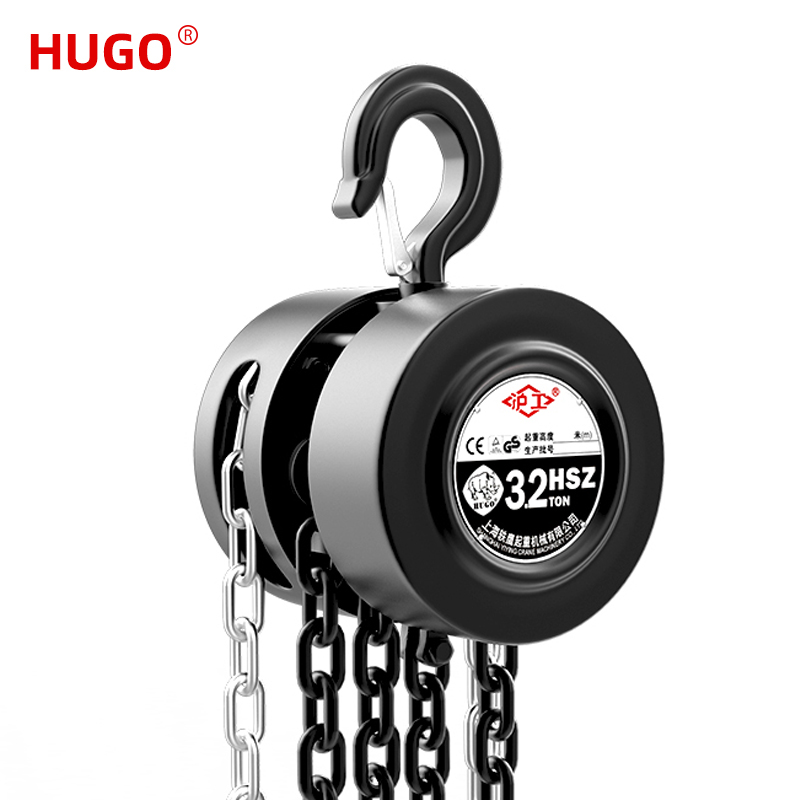Choosing Between Manual and Electric Chain Blocks: When to Use Each
2024-03-04
Introduction:
Selecting the appropriate chain block for a lifting operation involves considering various factors, including the specific requirements of the task, the environment in which it will be performed, and the desired level of efficiency. Both manual and electric chain blocks have their distinct advantages and are suitable for different scenarios. In this blog, we'll explore the scenarios in which it's recommended to use a manual chain block over an electric one and vice versa to help you make informed decisions for your lifting needs.
Using a Manual Chain Block:
1. Portability and Mobility:
- When portability and mobility are essential factors, such as in construction sites, remote locations, or confined spaces, a manual chain block is preferable. Its lightweight and compact design make it easy to transport and maneuver without the need for electrical power sources.
2. Infrequent or Occasional Use:
- For lifting tasks that are infrequent or occur sporadically, investing in an electric chain block may not be justified. Manual chain blocks offer a cost-effective solution for occasional lifting operations without the need for ongoing maintenance or electrical power.
3. Budget Constraints:
- In situations where budget constraints are a consideration, opting for a manual chain block can be a more economical choice. Manual chain blocks are typically more affordable upfront compared to electric models, making them suitable for small-scale lifting applications or operations with limited resources.
4. Simple and Reliable Operation:
- Manual chain blocks are known for their simplicity and reliability. They have fewer moving parts and no reliance on electrical components, reducing the risk of malfunctions and simplifying maintenance requirements. For straightforward lifting tasks where precision control is not critical, a manual chain block can provide a reliable solution.
Using an Electric Chain Block:
1. Heavy-Duty Lifting:
- Electric chain blocks are designed to handle heavier loads and are equipped with powerful electric motors capable of lifting larger capacities. In scenarios where heavy-duty lifting is required, such as in manufacturing plants, warehouses, or shipyards, an electric chain block offers the necessary strength and capacity.
2. High Volume and Repetitive Tasks:
- For lifting operations involving high volume and repetitive tasks, an electric chain block can significantly improve efficiency and productivity. Its faster lifting and lowering speeds, combined with features such as variable speed control and programmable settings, make it well-suited for continuous and repetitive lifting tasks.
3. Precise Control and Safety Features:
- Electric chain blocks provide precise control over lifting operations, with features such as variable speed control and overload protection mechanisms. In scenarios where precision control and safety are paramount, such as in cleanrooms, laboratories, or critical lifting applications, an electric chain block offers the necessary control and safety features.
4. Reduced Physical Exertion:
- Electric chain blocks reduce the need for manual labor and physical exertion, making them suitable for lifting tasks that require minimal operator effort. This can be particularly beneficial in situations where operators need to conserve energy or avoid strain-related injuries.
Conclusion:
Choosing between a manual and electric chain block depends on various factors, including portability, frequency of use, budget constraints, lifting capacity, precision control, and safety requirements. By assessing the specific needs and constraints of each lifting operation, you can determine whether a manual or electric chain block is the most suitable solution. Whether prioritizing portability, affordability, heavy-duty lifting capabilities, or precision control, there is a chain block type available to meet your requirements and enhance safety and efficiency in your lifting operations.



